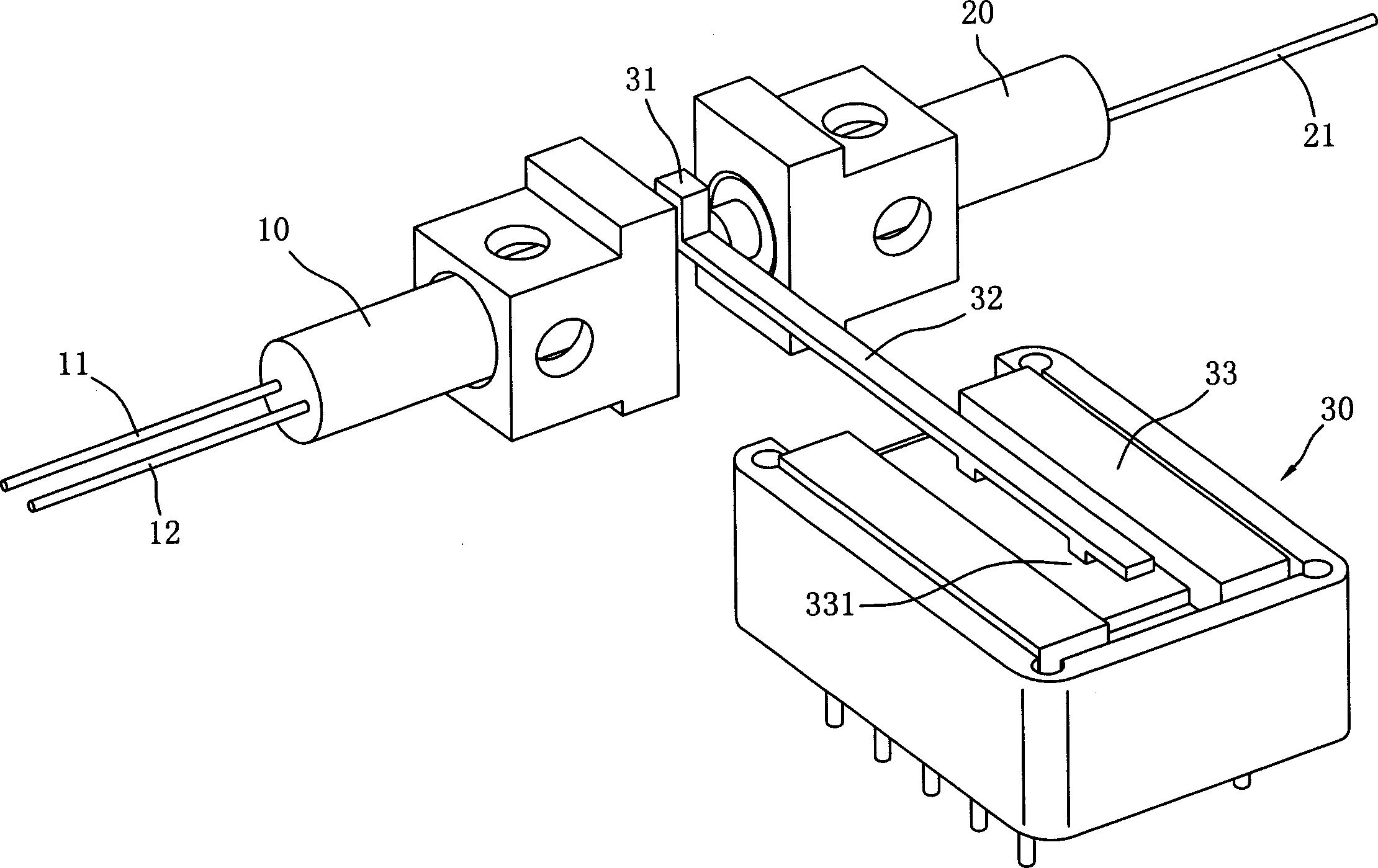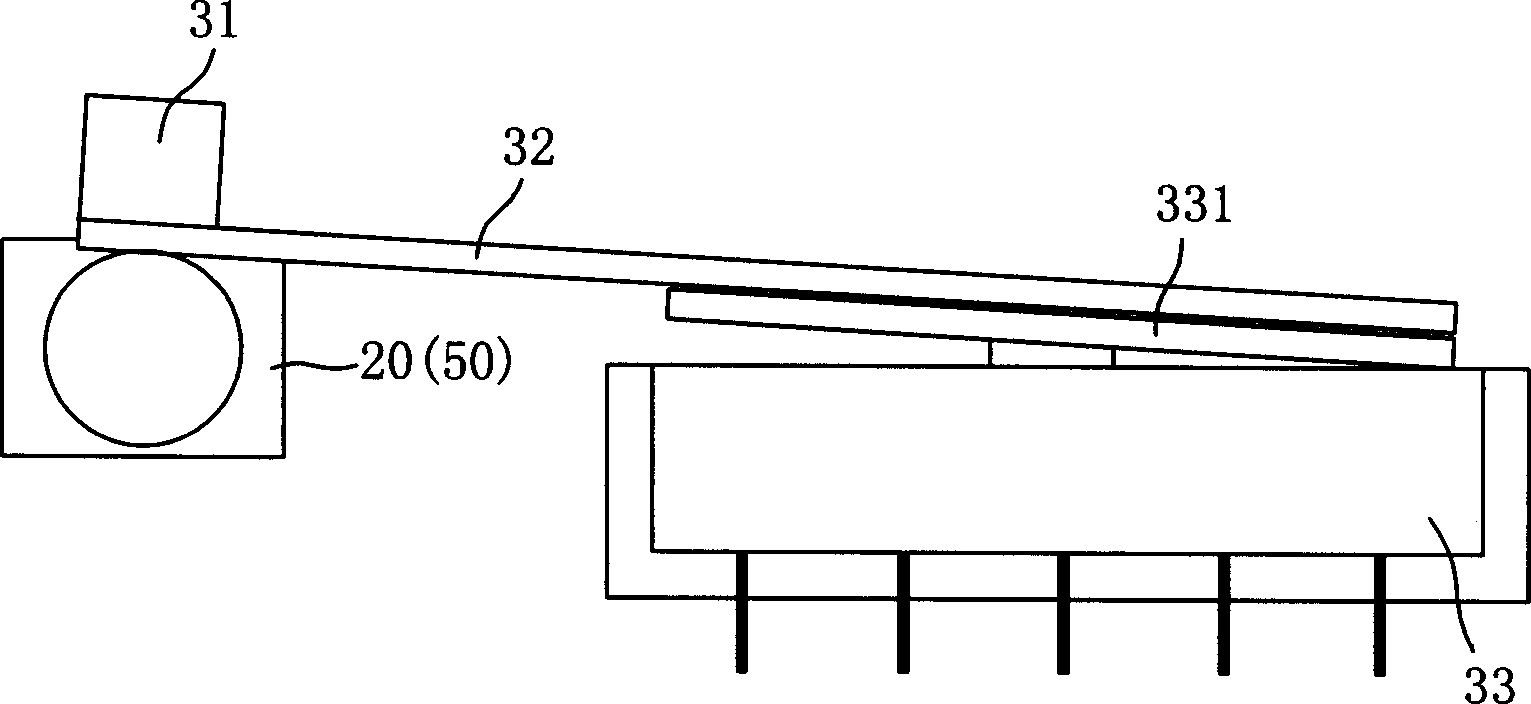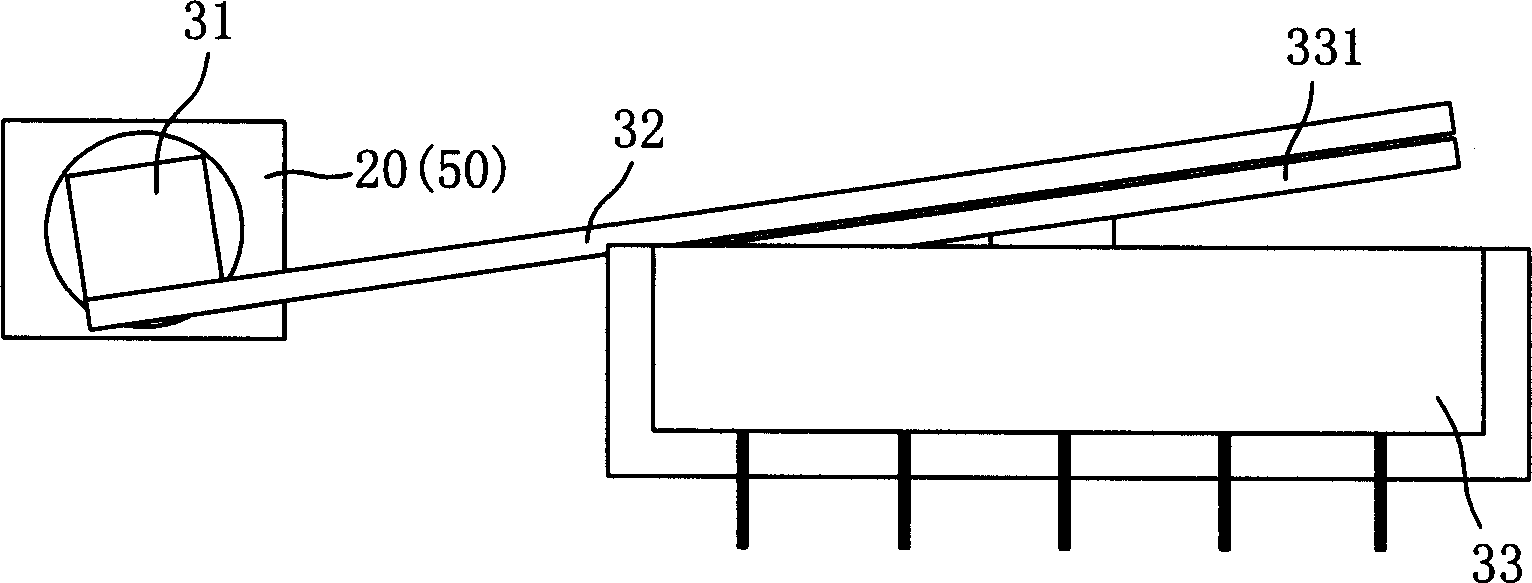Mechanical optical switches
An optical switch and mechanical technology, applied in the field of mechanical optical switches, can solve the problems of switching stability or repeatability, large size, complex structure, etc.
- Summary
- Abstract
- Description
- Claims
- Application Information
AI Technical Summary
Problems solved by technology
Method used
Image
Examples
Embodiment Construction
[0032] Such as figure 1 and Figure 2A , 2B As shown, the first embodiment of the mechanical optical switch disclosed in the present invention can selectively reflect light beams and allow light beams to pass through. This mechanical optical switch is a 1×2 optical switch and includes a dual-core optical fiber collimator device (dual-core collimator) 10, single-core fiber collimator (single-core collimator) 20 and switching device 30.
[0033] The dual-core fiber collimator 10 includes a transmitting fiber 11 and a first receiving fiber 12 .
[0034] The single-core fiber collimator 20 has a second receiving fiber 21 , which is located opposite to the dual-core fiber collimator 10 .
[0035] The switching device 30 includes a reflector 31, a cantilever 32 and a relay 33, wherein the reflector 31 is arranged at one end of the cantilever 32, and is movably positioned between the double-core fiber collimator 10 and the single-core fiber collimator 20, and has two The locked p...
PUM
 Login to View More
Login to View More Abstract
Description
Claims
Application Information
 Login to View More
Login to View More - Generate Ideas
- Intellectual Property
- Life Sciences
- Materials
- Tech Scout
- Unparalleled Data Quality
- Higher Quality Content
- 60% Fewer Hallucinations
Browse by: Latest US Patents, China's latest patents, Technical Efficacy Thesaurus, Application Domain, Technology Topic, Popular Technical Reports.
© 2025 PatSnap. All rights reserved.Legal|Privacy policy|Modern Slavery Act Transparency Statement|Sitemap|About US| Contact US: help@patsnap.com



